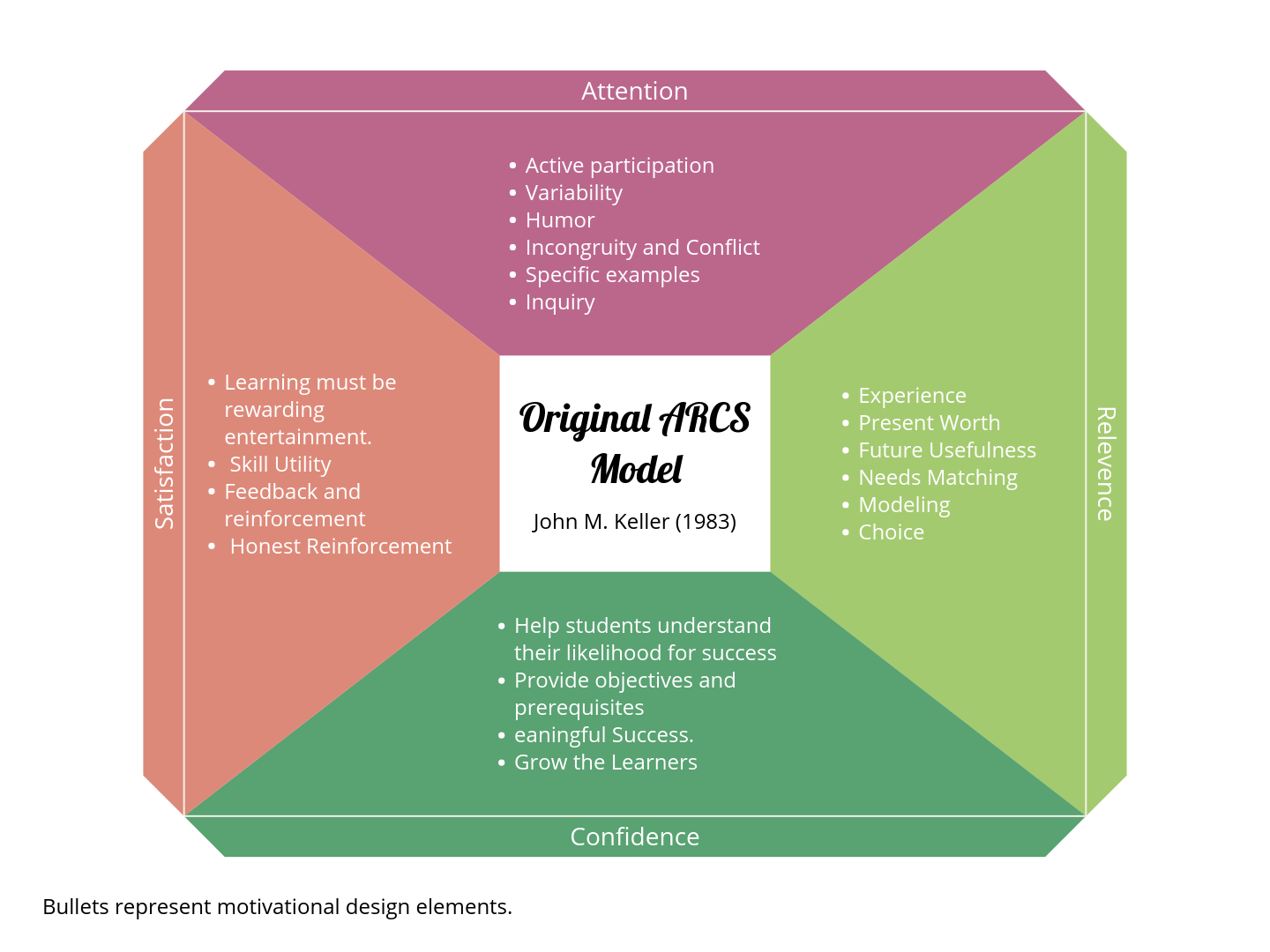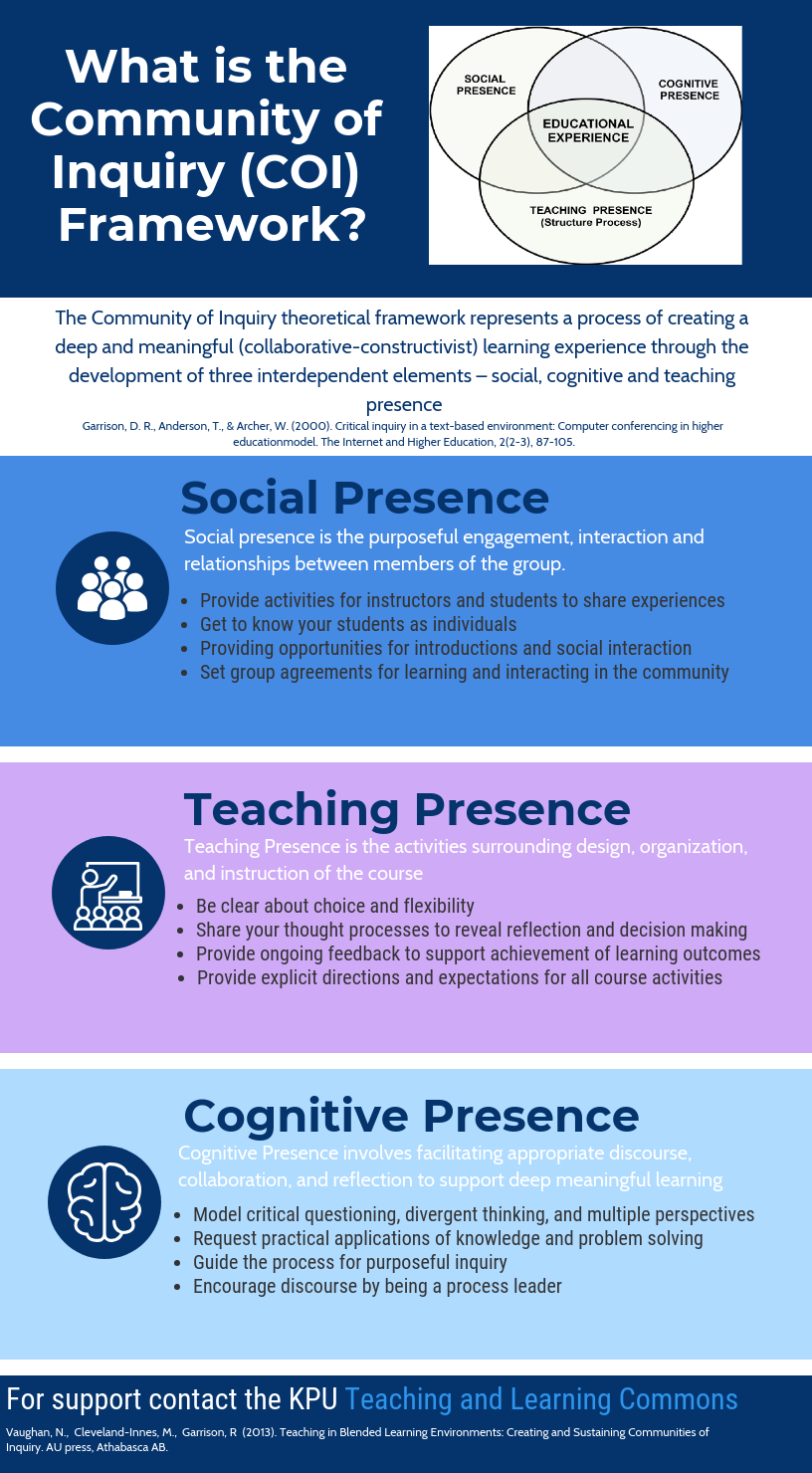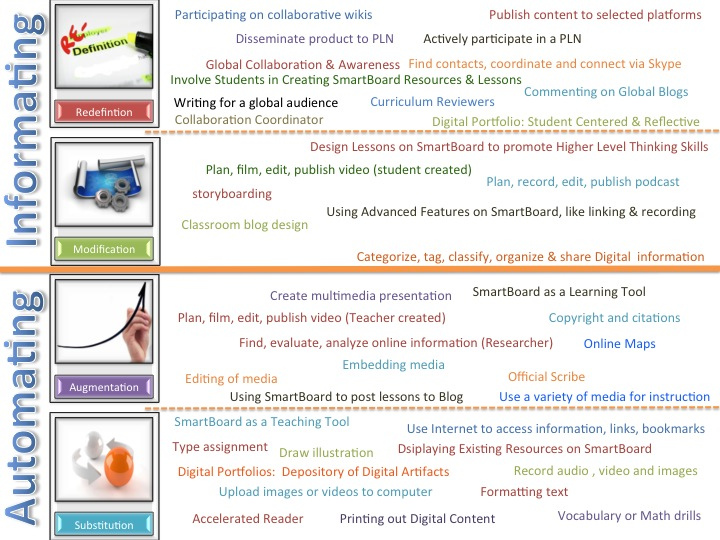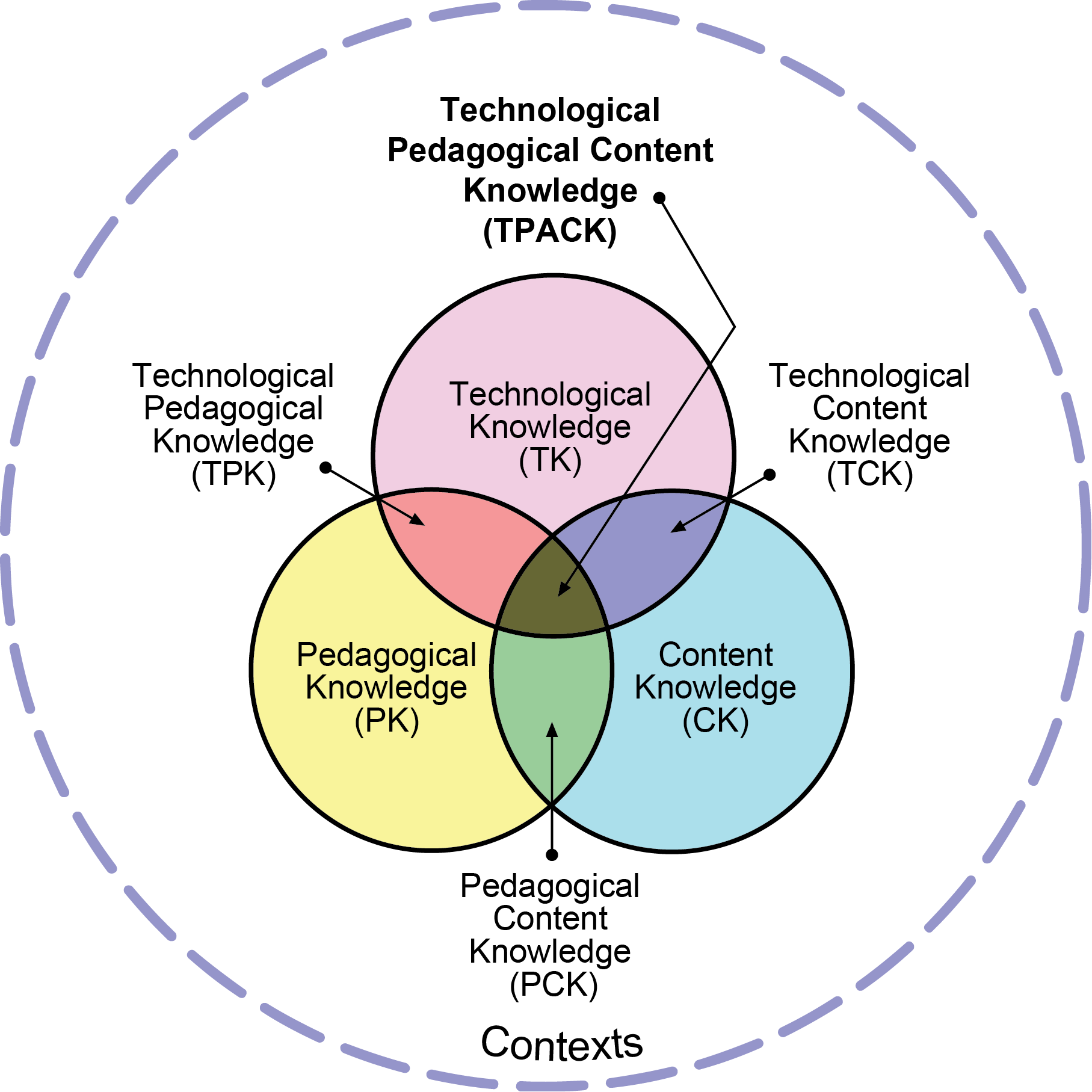ARCS Model
The ARCS model of motivation was developed by John Keller. Its design approach focuses on the motivational aspects of learning environment. His concepts are clustered into four categories: attention (A), relevance (R), confidence (C), and satisfaction (S). Learn more about the ARCS model in this Pressbook resource.
ARCS model

COI Model
COI model

SAMR Model
The SAMR model was developed by Dr. Ruben Puentedura which provides a framework to show the impact of technology on teaching and learning. The model is broken down into four stages or roles technology plays in teaching and learning: Substitution, Augmentation, Modification, and Redifinition. Learn more about the SAMR model.
SAMR model

"The SAMR model" by Will Fastiggi is licensed under CC BY 4.0
TPCK Model
The TPCK model is a simple way to look at our own teaching practice and ensure that we have technological (T), pedagogical (P), and content knowledge (CK) necessary to build learning activities for our learners. Learn more about the TPCK model.
TPCK model

"TPCK model" by Digital Technologies Hub is licensed under CC BY 4.0